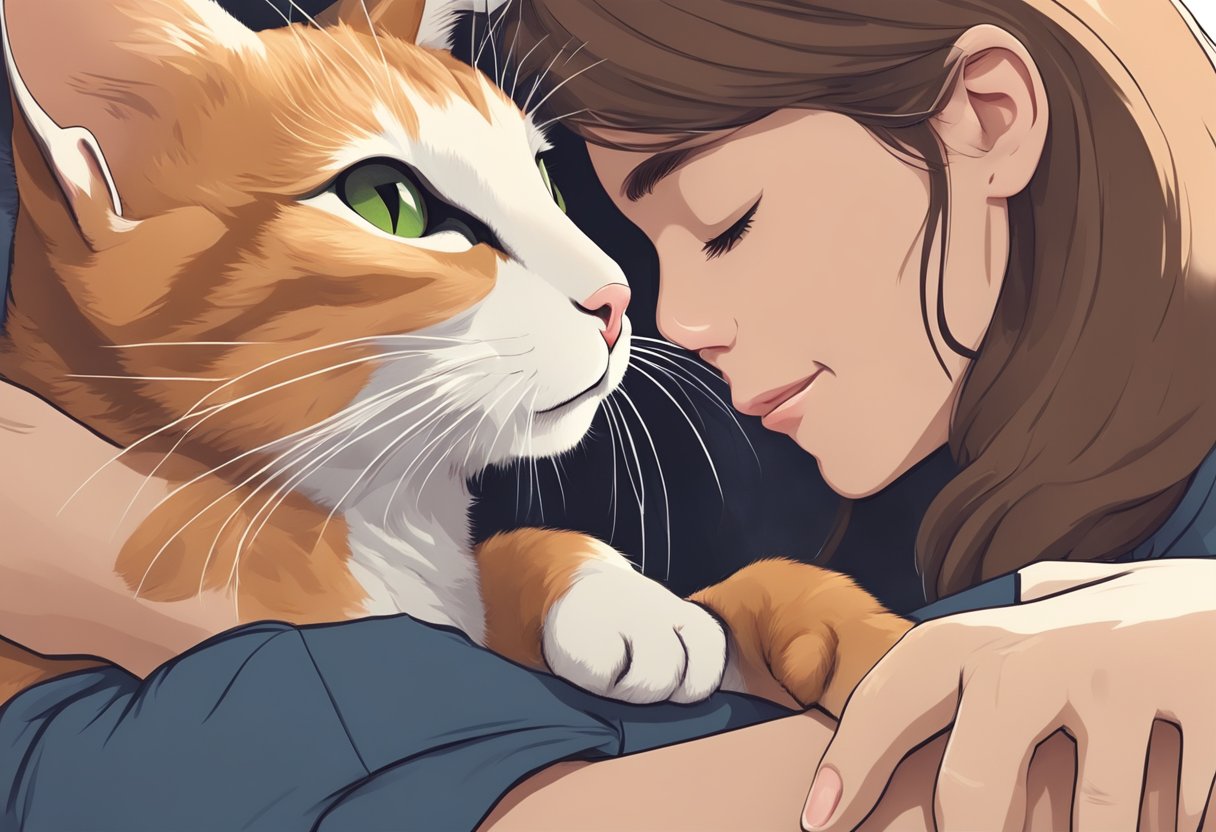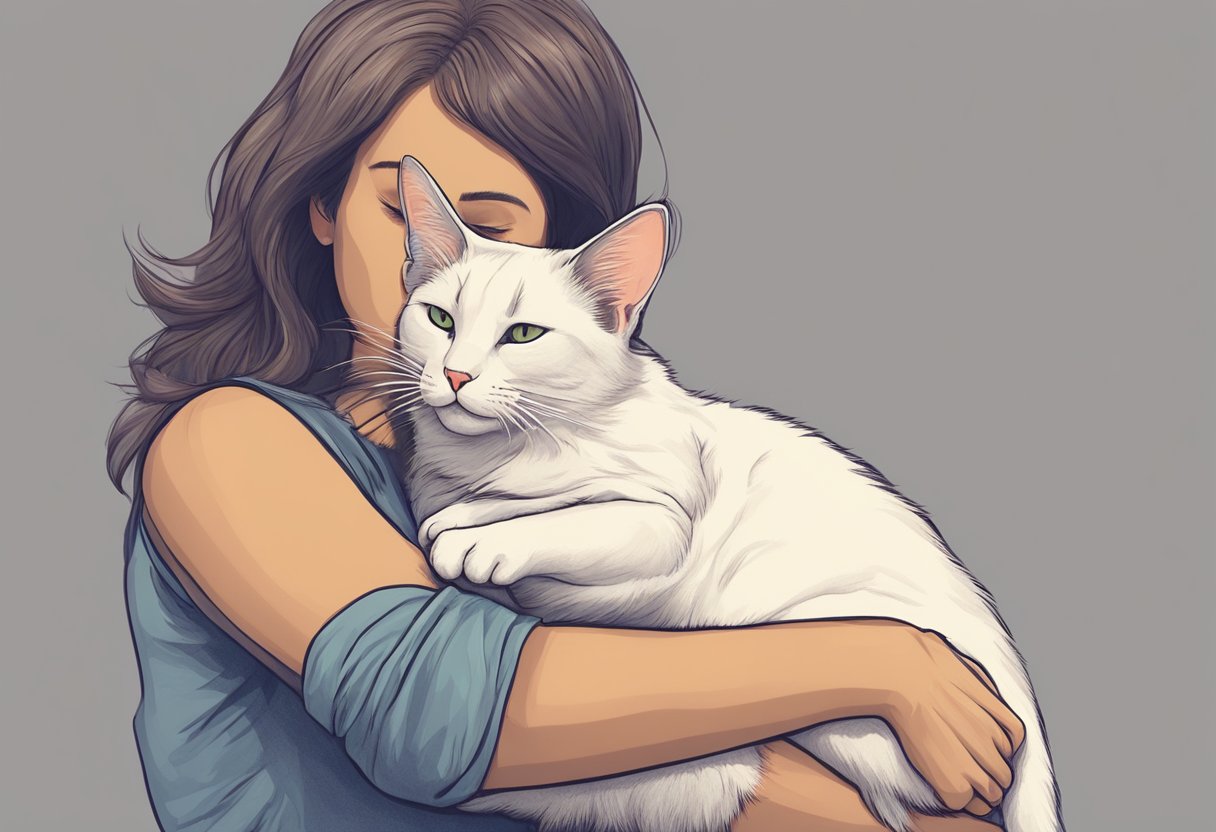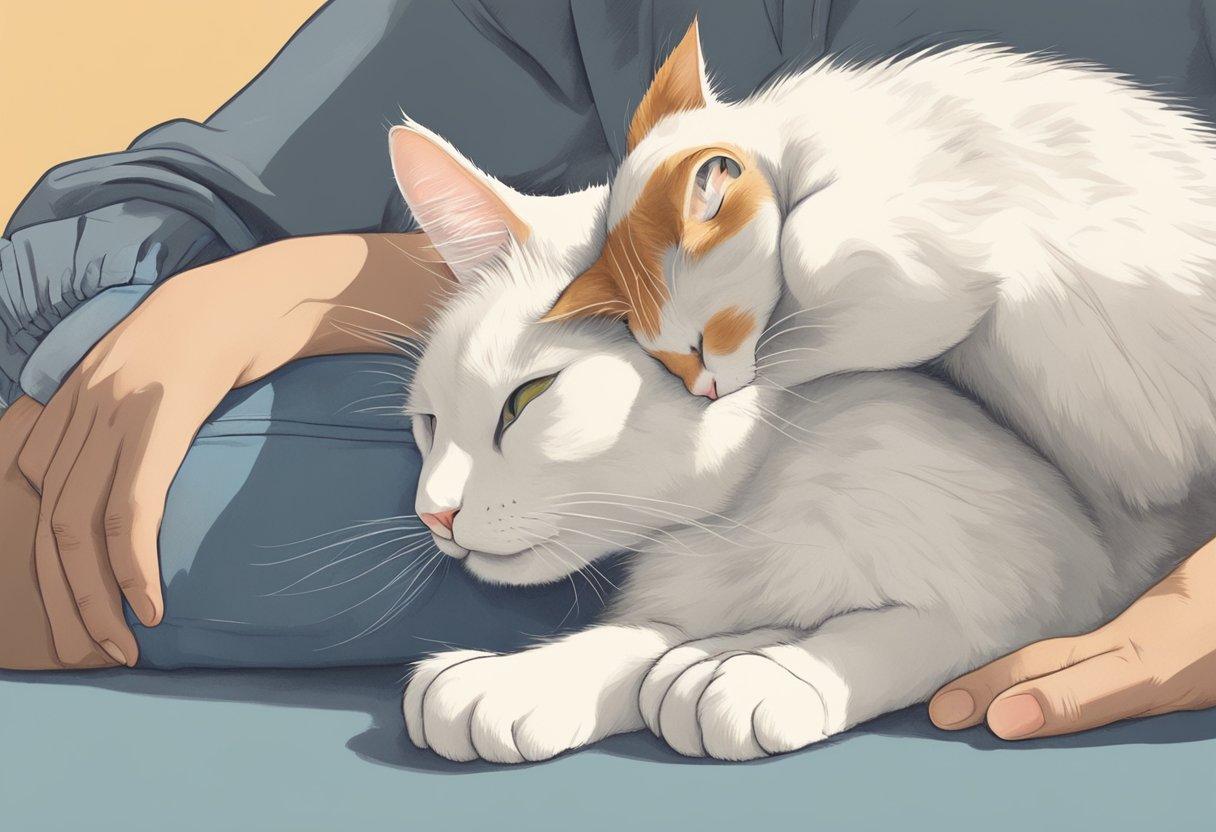Cats have a variety of behaviors that can seem quirky to humans, and one peculiar habit that many cat owners notice is their feline’s fascination with human armpits. This seemingly odd behavior is actually tied to a cat’s keen sense of smell and instinctual behaviors. Armpits can carry a unique scent that may attract cats as these areas accumulate natural human odors which cats use for scent recognition. Understanding why cats are drawn to armpits requires an insight into feline olfactory capabilities as well as their social behavior.

The armpit affection can also reflect a cat’s desire for warmth and comfort. As areas of the body that retain more heat, armpits may provide a cozy spot for cats to snuggle and bond with their owners. Additionally, the act of nuzzling or licking armpits allows cats to leave their own scent as a way of claiming their beloved owners. While this behavior is usually harmless, it’s important for cat owners to be aware of the potential for irritation or allergic reactions, ensuring the comfort and health of both the pet and the human.
Key Takeaways
- Cats are attracted to armpits due to their strong sense of smell and the unique human scents present.
- Seeking comfort, cats may find the warmth and familiarity of their owner’s armpits appealing.
- Awareness of potential skin sensitivities is crucial when a cat shows affection towards armpits.
Anatomy and Behavior

Cats’ attraction to human armpits can be explained through their intricate anatomy and inherent behaviors, which are directly linked to their keen sense of smell, secretion of pheromones, and natural grooming practices.
Feline Sense of Smell
Cats possess a highly developed olfactory system; their sense of smell is much stronger than humans’. This sense allows them to detect and interpret the world around them, particularly through scents and odors emitted by humans, such as those found in the armpit area.
The Role of Pheromones
Pheromones play a central role in feline communication, serving as chemical signals that convey messages between cats. Humans also release pheromones, particularly from areas like armpits, which may be fascinating to cats. This fascination is attributed to cats’ vomeronasal organ, a sensory receptor adept at processing these chemical compounds.
Grooming Habits
Grooming is an integral part of a cat’s daily routine. It is not just about cleanliness; it also involves scent-marking. When cats groom their owner’s armpits, it could be a sign of trust and comfort, as they mingle their scent with their owner’s through licking, which aids in the distribution of their own scent glands.
Mimicking Maternal Bonding
Kittens learn and engage in grooming behaviors early on, often initiated by the mother to create a comforting bond. A cat licking its owner’s armpit may be replicating this maternal behavior, drawing on instincts ingrained since kittenhood to express trust and bonding.
Territorial Marking and Ownership
Territory is of immense importance to cats; they often mark their area through scent glands located on their body. By grooming their owner, particularly in the armpit region, they are extending this sense of ownership, indicating that their human is part of their territory.
Health and Sensory Feedback
Through grooming and particularly licking, cats receive sensory feedback that can indicate the health status of their owners. The unique mix of sweat and scent in the human armpit may hold information about their owner’s health, to which cats might be instinctively drawn.
Cats’ Curious Behaviors
Curiosity is a hallmark trait of feline behavior. Quirks like licking an armpit may stem from cats’ natural curiosity and interest in novel scents and tastes. While some may chalk it up to pica or other quirks, often, it is simply a cat exploring their environment and the people in it with their extensive sensory toolbox.
Cat-Human Interaction

In the realm of feline behaviors, a cat’s inclination to cozy up to their owner’s armpit is rooted in a complex blend of affection, scent recognition, and territorial instincts. Cats perceive their human companions as integral members of their environment, forming unique interactions that span from demonstrations of love to assertions of presence.
Expression of Affection Towards Owners
Cats often demonstrate their affection and trust for their owners through physical contact, which sometimes includes snuggling into the owner’s armpit. This behavior can be likened to a cat rubbing against its owner, where the feline is marking the person with their scent as a sign of familiarity and comfort.
Comfort and Security Seeking Behavior
Many cats retreat to their owner’s armpit area as a source of comfort and security. The enclosed space and warmth provide a sense of safety, allowing cats to relax and alleviate feelings of anxiety. A useful analogous situation is a cat’s similar behavior to sniffing an armpit for comfort, like a security blanket.
Human Scent and Remembrance
The human armpit contains apocrine sweat glands that produce a unique scent through sweat that can include pheromones. Cats have a keen sense of smell and are often drawn to this scent for its remembrance value, associating it with their owner and the comfort of their shared environment.
Ownership and Territory in Human Spaces
Cats mark their territory with scent to establish ownership within their environment. By seeking out their owner’s armpit, a cat can mix their scent with their owner’s, essentially claiming the human as part of their territorial space. This is an intimate form of marking that also strengthens the bond between the cat and its owner.
Respecting Cat’s Personal Boundaries
Understanding the importance of boundaries is crucial when interacting with cats. Just as they show affection and trust, cats also require respect for their personal space from their owners. Recognizing when a cat is seeking closeness or distance allows the owner to maintain a comfortable and trustful relationship.
Physiological Attraction
Cats display a distinctive affinity for human armpits due to the unique combination of sweat composition and the warmth these areas offer. This feline behavior can be observed and explained through a physiological lens where scent and tactile preferences play crucial roles.
Sweat Composition and Feline Attraction
Human sweat contains a complex cocktail of salts, proteins, and fats, which produce a scent profile that can be intriguing to cats. The underarm area emits pheromones that are particularly attractive to cats, largely due to their communicative properties in the animal kingdom. Such compounds are powerful messengers, and cats have a keen sense of smell that draws them to these human scents.
Warmth and Comfort of Armpits
Armpits provide a source of warmth and comfort which cats naturally seek out. The relatively confined space of an armpit may also offer a cat a sense of security, akin to a burrow or enclosed space. This could make the armpit an appealing spot for a cat to cuddle and feel relaxed.
Ear and Feet Preferences
While some cats are drawn to armpits, others may display preferences for different body parts, such as ears and feet. Just like armpits, these parts also have distinct tastes and smells that may appeal to a cat’s sensory preferences. The attraction to these areas isn’t universal among all cats, and these tendencies can be attributed to individual variances in feline behavior and past experiences.
Potential Concerns and Precautions

When exploring why cats are drawn to human armpits, it’s vital to consider health implications and how to manage these interactions responsibly. Owners must be aware of potential risks from grooming products, the need to discourage certain behaviors, and the importance of monitoring their cat’s ingestion of non-food items.
Health Risks from Human Products
Humans often apply products such as deodorant and antiperspirant that contain chemicals which might be harmful to cats if ingested. Fragrances and other additives can pose health risks to felines due to their grooming behaviors. To safeguard their health, check product labels for toxic substances, and consider using fragrance-free or cat-safe alternatives.
Preventing Unwanted Licking Behaviors
To prevent cats from licking sweaty clothes or skin which might have traces of deodorant or antiperspirant, it’s advisable to:
- Keep clothes out of reach and store them properly.
- Train your cat with gentle discouragement when they start licking.
Remember, consistently applying these measures can mitigate the licking behavior, especially if it becomes obsessive or bothersome.
Nutrition and Ingestion of Non-food Items
While a cat’s interest in licking may be innocuous, it could lead to a condition called pica—the ingestion of non-food materials—especially if they begin to consume inedible items. This behavior not only reflects nutrition concerns but also serious health risks. Ensure your cat’s diet meets all their nutritional needs to decrease the odds of pica, and keep an eye out for signs of this disorder. If you spot such habits, it’s critical to consult a veterinarian.
Frequently Asked Questions
Cats’ interactions with human scents, including armpit odors, can evoke a range of behaviors from affection to territorial marking. Understanding these feline responses deepens the insight into the complex cat-human relationship.
What causes cats to be attracted to human body odor?
Cats have a highly developed sense of smell and are naturally drawn to the scent of human body odor. Human sweat, particularly in the armpit area, emits compounds known as pheromones which are intriguing to cats and may serve as a means of communication or recognition.
Is there a reason cats knead particularly near the armpit area?
Cats often knead to show contentment, comfort, and claim ownership. The armpit region might be appealing for kneading due to its warmth and the owner’s scent, reinforcing the cat’s bond with their human.
How does a cat’s behavior change in response to deodorant application on human skin?
The application of deodorant can alter or mask the natural human scent that cats recognize. Cats may react with confusion or decreased interest in an area where deodorant has been applied, as it disrupts the familiar scent cues they associate with their owner.
Can a cat’s affection manifest in licking or biting its owner’s arm?
A cat’s licking or gentle biting can indeed be signs of affection. These behaviors often reflect a cat’s desire to groom or show care to their owner, similar to how they would interact with other cats in a familial context.
Are cats demonstrating affection or marking behavior when they bite underarms?
When cats bite underarms, they can be displaying affection, but biting can also be a marking behavior. Cats have scent glands in their mouths, so biting may be a way to leave their scent as a form of claiming their owner.
How do the holding positions affect a cat’s comfort, specifically being held by their armpits?
Cats may have preferences for certain holding positions. Being held by their armpits can make some cats comfortable due to the close contact with their owner’s scent, while others may find it uncomfortable or restraining, preferring to have more freedom of movement.
